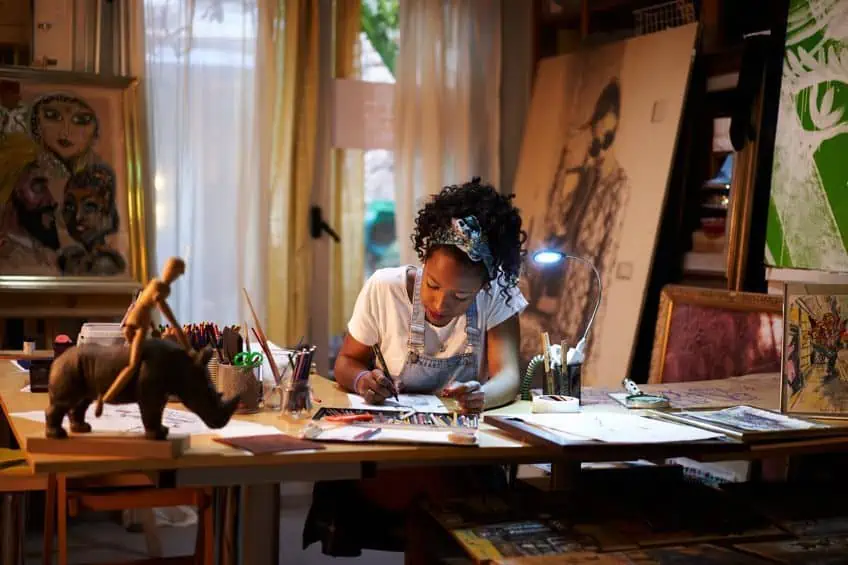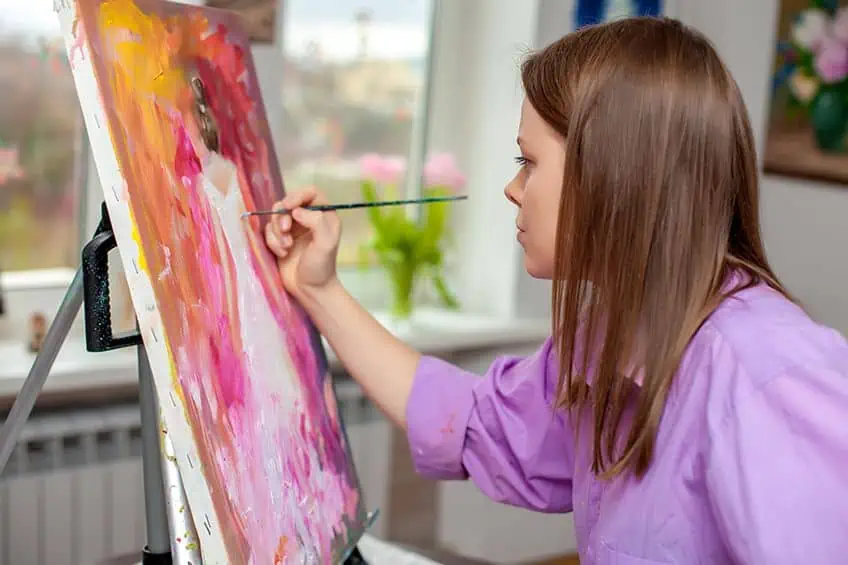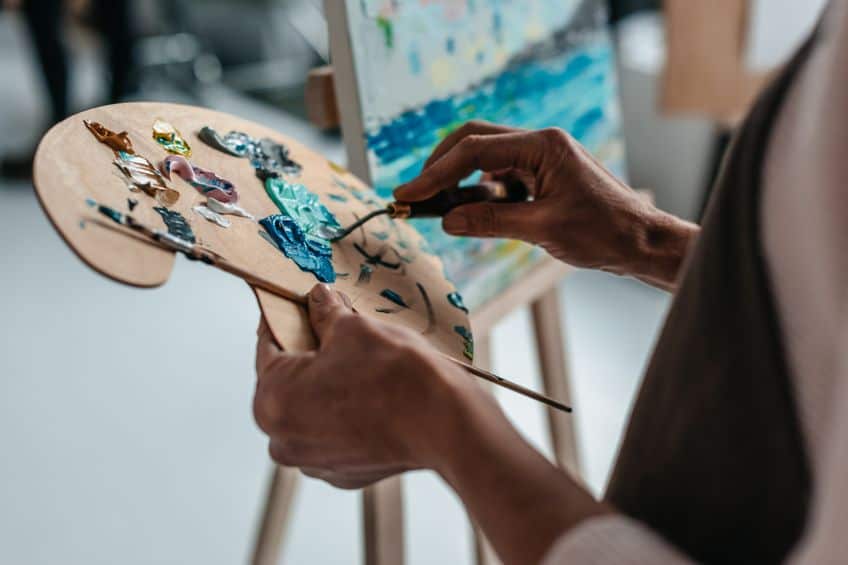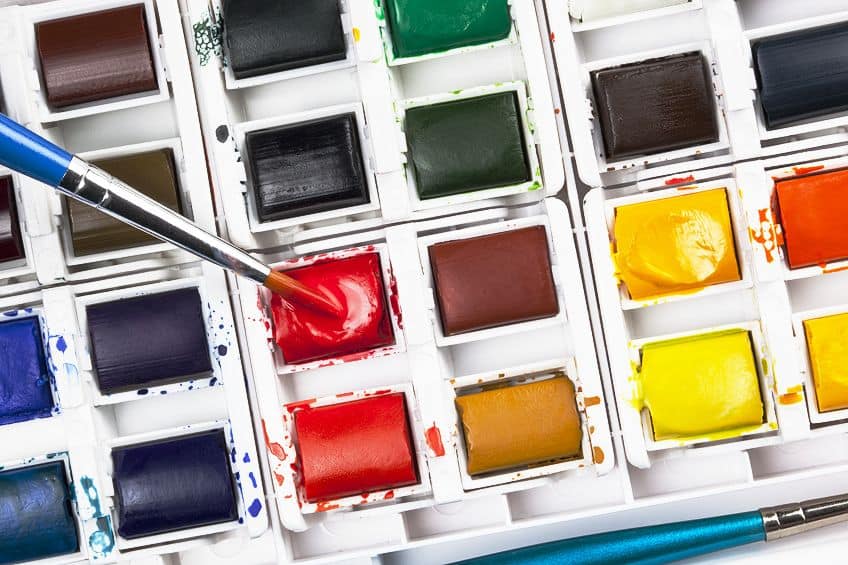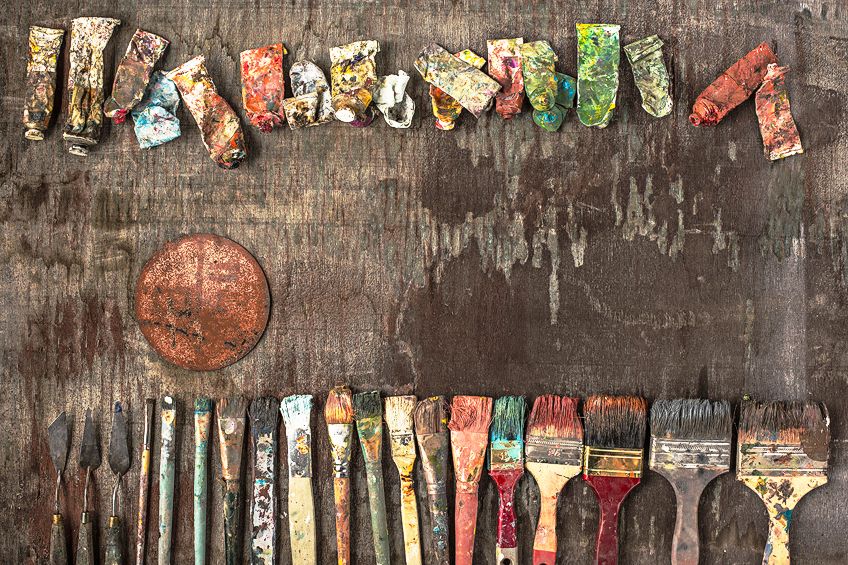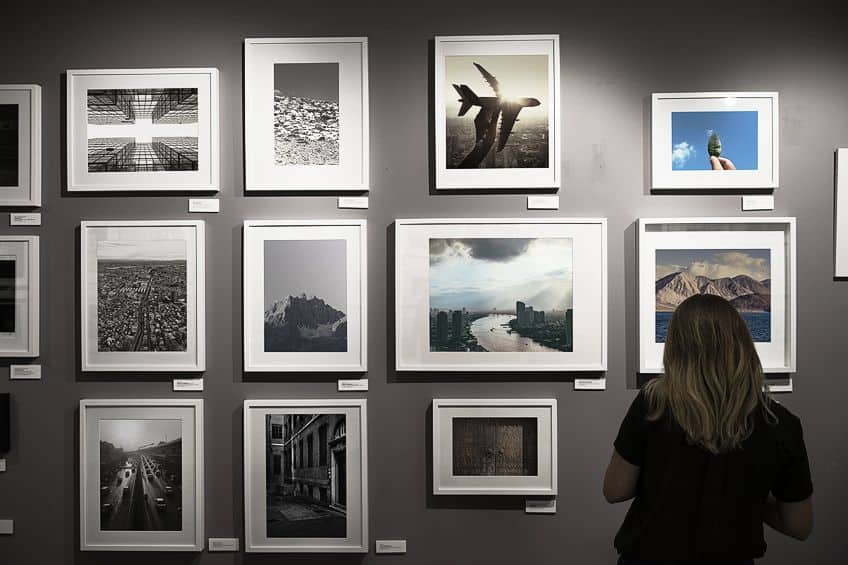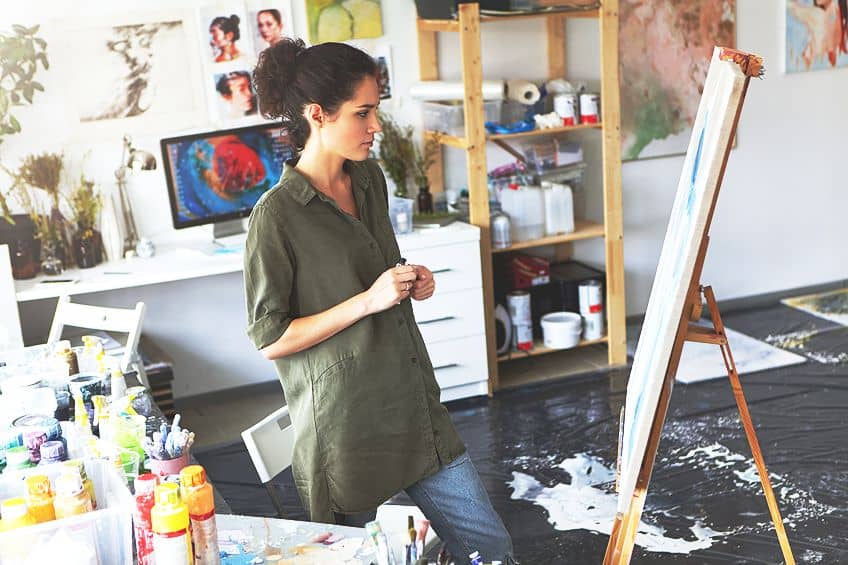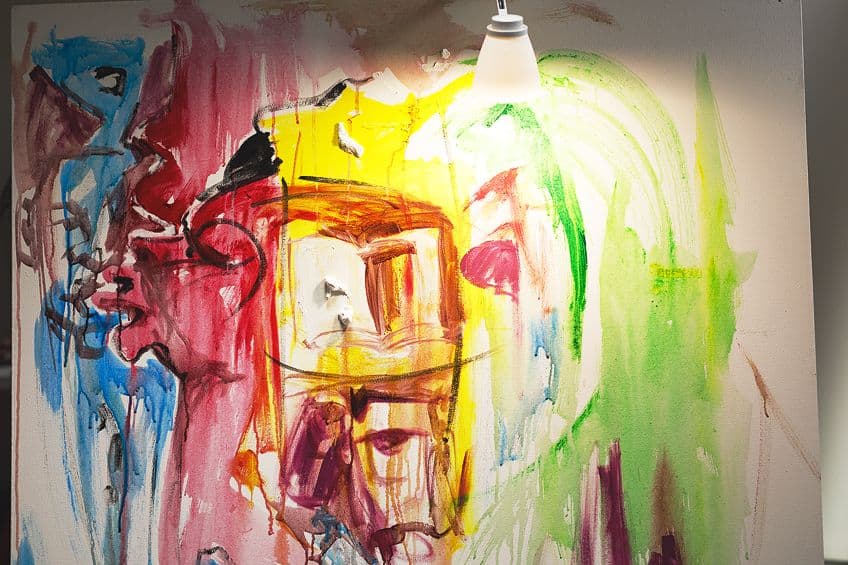What Is Painting? – A Comprehensive Guide on Painting
From finger painting in kindergarten to The Scream (1893) in the National Museum in Oslo, painting has been used for centuries as a form of creative expression. Have you ever wondered what is painting exactly, and if mixed media and digital art are also considered paintings? Below, we explore the origins of painting, and how it has evolved with different techniques and tools into the medium we use today.
Contents
What Is Painting?
In the past, a painting was simply the expression of emotions and ideas through art created using pigments or paint. As technology has evolved, so has our definition of what painting is. Today, painting is done using different techniques and tools, often combining different mediums and canvases. This has altered our perception of painting and what is considered a painting. When talking about “what is a painting,” it is important to differentiate between the action and the object. The term “painting” is used to describe the processes of working with paints and pigments. A painting, however, is created when the act of painting is applied aesthetically to a two-dimensional surface.
This is usually created on a canvas, but many other materials such as paper, silk, and wood have also been used. Three-dimensional painted surfaces are considered sculptures instead of paintings.
The traditional painting mediums used in paintings are usually in liquid form, such as oil or acrylic paints, however, some solids such as pastels can also be used to create paintings. Most solid mediums, like charcoal and graphite, are usually used to create drawings rather than paintings. Some mediums like ink can be used to create both drawings and paintings, therefore we have separated paintings from drawings and sculptures by the way the materials are applied to the surface.
If the medium is applied using typical painting tools, such as brushes, palette knives, and sponges, or thrown directly onto the surface then the created artwork is considered a painting. If the medium is applied using a pen, crayon, or similar techniques, then the artwork is considered a drawing. The painting itself may also include other materials aside from paints and pigments such as sand, gold leaf, clay, and even other mediums. This is our definition; however, many other interpretations are possible. Just as important as the materials and methods used to create the painting is the message and style of the artworks themselves. Paintings can be both Photorealistic or Abstract, representational such as a landscape painting, or symbolic as in Symbolist art. A painting can be used to convey an idea or narrative, like in an Allegorical painting, or emotions and feelings in Expressionism.
Painting was and is still considered a valuable form of expression through visual art.
Origins of Painting
The first paintings appeared over 40,000 years ago. These primitive paintings were made using ochre and mostly depicted animals and basic human figures. Currently, the oldest known painting is of a bull, found in Lubang Jeriji Saléh cave in Indonesia, and dates back to over 52, 000 years ago. The mediums used historically vary greatly around the globe depending on the materials that were available to the people of the region. Oil and watercolor paintings were prevalent in early Western cultures, while ink dominated in Eastern cultures.
Each of these mediums have long and complex histories, traditions, and techniques that were developed in these regions, which have continued to evolve into the modern day.
Evolution of Painting Throughout History
Historically, painting was considered an important tool for depicting and recording important events and messages. Because of this, the themes and subjects of paintings were largely dictated by the elite and powerful. Artists were employed like other skilled artisans, which led to the vast majority of both Western and Eastern art being dominated by religious and political works. Later in Asia and Europe, painting evolved into more personal works of artistic expression instead of solely commissioned works. As painters were losing their secure patronage during the 19th century, their paintings began appealing more to the marketplace and general masses who paid to view their works in exhibits. While these paintings were less personal to the artists, the resources provided by galleries and museums allowed artists to experiment and explore more unconventional mediums and techniques.
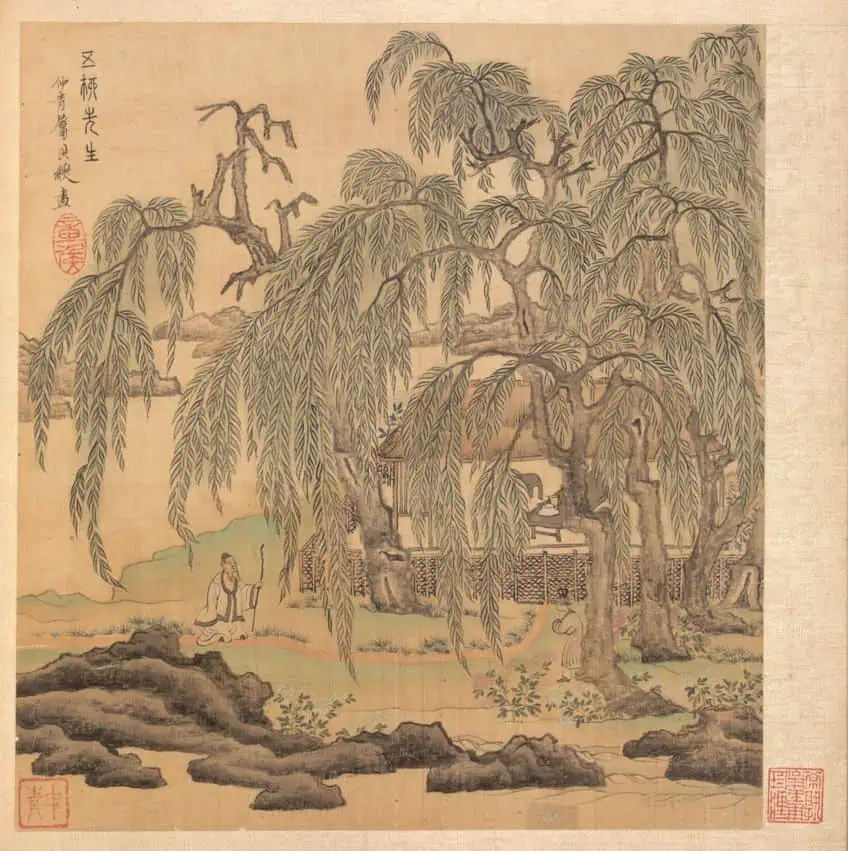
The invention of photography was a major driver of changing art styles and themes. The decades following the widespread use of photography saw a shift from paintings as a tool for historical preservation and documentation to the now more modern view of art as a creative conceptualization and expression of the artist.
Famous Painters and Their Contributions to the Art World
There have been countless incredible painters throughout history, however, there are some that have had a lasting impact that have transcended their lifetimes. Leonardo da Vinci was a pioneer of composition in art and experimentation with different mediums. Da Vinci’s trademark triangular composition gave his paintings stability and is still widely used today in paintings, sculptures, and photographs. Da Vinci was also an early supporter of using anatomical models to refine his art at a time when this was illegal. Raffaello Sanzio da Urbino, or more commonly known as Raphael, was also a master of composition and was praised for his clarity of form. Raphael created an immense body of work, of which his Madonna paintings were most well-known.
Artemisia Gentileschi was a famous Baroque painter and was a pioneer of women finding success in the then male-dominated art world. Artemisia’s paintings were rich in color and featured her signature chiaroscuro technique.
Different Painting Mediums
One of the most important decisions for an artist is which medium or combination of mediums they will be using in their painting. Some of the most popular painting mediums include oil, tempera, fresco, or water-based paints such as acrylic, watercolor, ink, encaustic, or gouache.
Acrylic Painting
Acrylic paint is one of the most broadly used painting mediums today. This budget-friendly, fast-drying medium consists of pigments mixed with an acrylic polymer emulsion. Acrylics dry down water-resistant, but the versatile medium is water-soluble when wet and can be diluted with water to change its viscosity or thickness. Acrylic paints can also be altered using acrylic gels, media, or pastes to produce a variety of finishes that can even resemble watercolors or oil paintings.
Oil Painting
Next to acrylic paints, oil paints are the most popular painting medium. Since its rise to popularity in 15th century Europe, oil paints have provided artists with rich and vibrant colors. Oil paints are produced by adding pigments to a combination of drying oil and solvents. They have a much longer drying time compared to water-based paints, giving them their signature blending and sculpting ability.
More recently, water-mixable oil paints have become available, which tend to dry quicker than traditional oil paints.
Watercolor Painting
Watercolor is a popular and historic medium where the pigments are bound with a solution that is water-soluble. Watercolors enable an artist to create a wide breadth of techniques and effects through combining it with different amounts of, or even no, water. Watercolors are well-loved and have a rich history in many countries such as India, Ethiopia, and China. This medium comes in a variety of forms including pens, pencils, and straight out the tube.
Gouache Painting
Gouache is another example of a water-based medium, although it differs from watercolor in that this paint is made of pigments and materials that produce an opaquer effect. The larger particles, the ratio of pigment to water, and the addition of inert white pigments like chalk, leaves gouache paint with greater weight, opacity, and reflective properties than watercolors but still thinner than acrylics.
Tempera Painting
Tempera paints are one of the oldest painting mediums. Also called egg tempera, this medium is fast-drying and long-lasting, and many pieces have survived for thousands of years. Tempera was the most popular painting medium until the 15th century, after which it was overtaken by oil painting.
Ink Painting
While ink is more commonly used for writing and drawing, it has also been used to create many ink paintings. Ink paintings have a long and significant history, particularly in Asian cultures. Distinguishing an ink painting from an ink drawing can be tricky at times, however, the main difference lies in the use of line work versus washes of ink.
Many Chinese ink painters use various brushes and sponges to produce paintings containing both line work and broad sections of ink.
Encaustic Painting
Encaustic painting, or hot wax painting, is a medium where one adds colored pigments to warm beeswax and shapes the mixture using special metal tools and brushes. The wax can be manipulated before it cools or after by applying heated metal tools. This medium allows you to create unique effects such as encasing, layering, or adhering other mediums to the wax.
Pastel Painting
The pastel painting medium is made of the same powdered pigments and binders as other colored art mediums. Pastels are different from other painting mediums as they usually come in the form of sticks, however, soft pastels can be used to create paintings. These “paints” are highly blendable and are not as susceptible to the cracking, warping, and discoloration that fluid mediums can suffer from during the drying process.
Pastel paintings, however, are fragile and liable to smudge and thus need to be preserved either with glass frames or fixture sprays, but with the appropriate measures can remain pristine for centuries.
Digital Painting
Digital painting is the method of creating a visual art painting using a computer or drawing tablet. Canvases, brushes, colors, and other art tools are replicated virtually by software programs and allow artists to create their unique works of art directly on a computer. While digital painting is a relevantly new way of creating a visual art painting, it is quite different from ‘computer generated art’ as the art is created by artists using the computer rather than the computer creating mechanically generating images using mathematical calculations.
Painting Tools and Materials
Aside from the chosen painting medium itself, you will use many other tools in the creation of your paintings. Paints are most commonly applied using a paintbrush, however, there are many other methods including painting knives, sponges, rollers, or even sprayers. Artists also use different canvases, easels, and even palettes, each adding their own advantages and disadvantages to the painting process.
Brushes
The paintbrush is one of the most vital tools in the art of painting. Brushes come in two main varieties namely, natural and synthetic. Synthetic brushes are commonly made of polyester, nylon, or other manufactured materials and usually cost less than natural brushes. They are also softer than natural brushes so are great for acrylic, ink, watercolor, and gouache paints. Oil and pastel paints are thicker than acrylic and watercolor paints, so need a coarser bristle to hold onto the paint. This means opting for a natural bristle brush, made from hog or horsehair, or mixed brush over a purely synthetic brush. Investing in quality brushes can not only save you money as they last longer but can also save you from having to completely redo a painting.
Your brushes are an investment that can last many years if properly looked after, so be sure to get a mix of different sizes and shapes.
Easel
Easels are specialized stands that hold your canvas while you paint. They keep your painting level at a comfortable height and allow you to step back and view your work to give you a better perspective of the proportions of your piece. The easel you use will be picked largely based on the size of canvas you work with and where you choose to paint. Tabletop easels are great for if you work with small to medium canvases and prefer to work at a desk or take your canvas on the go. If you paint with larger canvas or prefer to paint in a dedicated space, then opt for an H- or A-frame easel. Opt for an easel that makes viewing your subject or reference easy and fits the size of canvas you use.
Palette
Just as there are a variety of easels there are also a variety of palettes to choose from. Like with your easel, the palette that is right for you will depend on what is comfortable to use and where you choose to paint. Disposable palettes are great if you want an easy clean up or if you are just starting out with oil paints and want to invest in paints or brushes first. There are plastic and paper options with paper ones tending to be sturdier. Opt for handheld palettes for easy access to your paints but be aware that your arm might get tired after a few hours of work.
Wooden palettes are another great option as its smooth surface makes paints easy to work with. Cleaning up is also easy on a wooden palette as once the paint has dried you can simply scrape it off with a palette knife.
Canvas
The large variety of painting mediums available means that it is no surprise that there are many canvases available to artists. Besides your traditional universal-primed canvas, there are oil canvases and absorbent canvases. The traditional canvas is non-absorbent, which extends the drying time of both oil and acrylic paints, as well as providing them with a smooth surface. A large range of water- and oil-based mediums can be used on this type of canvas.
Oil canvases are primed with zinc white and linseed oil to create the perfect surface for oil-based paints. Absorbent canvases are primed with layers of chalk and are intended for use with tempera paints. Canvases can also be primed with an alkyd or gesso to reduce the drying time of your paints. Other tools you might use during painting include turpentine or mineral spirits for oil paints, a hot air dryer for encaustic paints, water for all water-based paints, and pencils to sketch out your paintings.
Different Painting Techniques
It is not only the artist’s choice of the medium but also the techniques that they use that combine to produce visually unique and eye-catching paintings. There are a plethora of painting techniques available to artists, each producing different effects with their own advantages and disadvantages.
Basic Painting Techniques for Beginner Painters
One of the easiest painting techniques for water-based paints involves playing around with how much water you add to your paint. This allows you to vary the weights, opacity, pigmentation, and finishes of your paints, and opens a world of diverse options and techniques to choose from without spending a cent. Experiment with dabbing your painting with paper towels or stiff bristles. Used dry, this can remove or thin layers and add texture, variation, and dimension to pieces. Stippling or repetitive dabbing with a loaded stiff brush can also add visual depths and dimensions and is useful for simplifying large areas of finer details like the leaves of background green or texture on stone.
Adding a pouring medium to acrylic paints is another beginner-friendly painting technique. Pouring medium gives acrylic paints the consistency of warm honey allowing you to experiment with dripping, pouring, and splattering the paint onto your canvas.
More Advanced Techniques for Experienced Painters
As mentioned earlier, there are a whole host of painting mediums available that alter various aspects of your paints. Some of these mediums can be difficult to use, however, with some practice, they can bring a unique look to your pieces. Smudging is a technique that involves applying multiple colors near one another and blending them together using a palette knife or dry brush. It can be tricky to pick the correct colors and blend them in a way that does not produce a dull brown, so a good knowledge of color theory is essential.
Another more advanced technique that makes use of color theory is washing. This technique is used for covering large portions of your canvas in a single color or toning your existing painting. To use washing to tone your painting, dilute your paint using an appropriate thinner or solvent until it is thin and largely transparent. This can then be painted over a dry painting to change the color temperature of your piece or add more dimension.
The definition of painting has changed many times over the last 40,000 years. While modern paintings do not hold as much historical or documentary value as paintings in the past, they are still important for the creative expression of ideas and emotions. The many different tools, techniques, and mediums available give painting a versatility that is only limited by your imagination.
Frequently Asked Questions
What Is Painting?
Painting is the act of applying paints or pigments to a solid surface. The paint can be applied either as decoration or to create a picture. This can be done using various tools including brushes, sponges, painting knives, or aerosols.
What Is a Painting?
A painting is created when the act of painting is applied strategically to a flat surface to create a work of art. This art is used to express the emotions, perception, or ideas of the artist in a way that is aesthetically pleasing. Paintings can take many forms, ranging from photorealistic depictions of the world to more abstract imaginings of concepts and feelings.
Megan is a writer and researcher who holds a degree in Social Sciences, with a specialization in Psychology and Environmental Science, from the University of Cape Town. Her dedication to acquiring knowledge and making a positive impact has driven her current work in promoting conscious and sustainable growth in Southern Africa. Megan’s interests encompass exploring the physical and psychological impacts of color in our environment on our mood and well-being. She is also passionate about the role of art and creativity, which has been an integral part of society since the beginning of human history. Since 2022, Megan has been contributing blog posts on painting and color theory at artfilemagazine.
Learn more about Megan van Schoor and about us.
Cite this Article
Megan, van Schoor, “What Is Painting? – A Comprehensive Guide on Painting.” artfilemagazine – Your Online Art Source. July 4, 2023. URL: https://artfilemagazine.com/what-is-painting/
van Schoor, M. (2023, 4 July). What Is Painting? – A Comprehensive Guide on Painting. artfilemagazine – Your Online Art Source. https://artfilemagazine.com/what-is-painting/
van Schoor, Megan. “What Is Painting? – A Comprehensive Guide on Painting.” artfilemagazine – Your Online Art Source, July 4, 2023. https://artfilemagazine.com/what-is-painting/.


